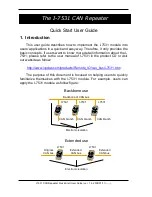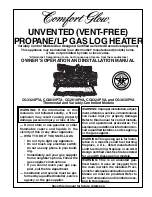
21
Recommended Level(s)
Fiberglass Pools
Fiberglass Spas
Other Pool and Spa Types
Water Temperature
68-88°F (20-31°C)
89-104°F (31-40°C)
68-104°F (20-40°C)
pH
7.3-7.4
7.3-7.4
7.6-7.8
Total Alkalinity (ppm)
120-150
120-150
80-120
Calcium Hardness (ppm)
200-300
150-200
200-400
Salt (ppm)
4500 Maximum
4500 Maximum
4500 Maximum
Free Chlorine (ppm)*
2-3
2-3
2-3
Total Dissolved Solids (ppm)
3000 Maximum**
3000 Maximum**
3000 Maximum**
*Free Chlorine
MUST NOT EXCEED 5 ppm!
**In saltwater chlorinated pools, the total TDS can be as high as 6000 ppm.
Table L.
Pool Water Chemistry
3.10.
Pool/Spa Water Chemistry
A
A
CAUTION:
Corrosive water can cause unwarrantable
damage to the heater.
NOTE:
Chemical imbalance can cause severe damage to
your heater and associated equipment.
Chemical imbalance can cause severe damage to the pool
heater and associated equipment. Maintain the water
chemistry according to the chart below. If the mineral
content and dissolved solids in the water become too high,
scale forms inside the heat exchanger tubes, reducing
heater efficiency and damaging the heater. If the pH drops
below 7.2, this will cause corrosion of the heat exchanger
and severely damage the heater. Heat exchanger damage
resulting from chemical imbalance is not covered by the
warranty.
For your health and the protection of your pool equipment,
it is essential that your water be chemically balanced. The
following levels must be used as a guide for balanced
water.
Occasional chemical shock dosing of the pool or spa
should not damage the heater providing the water is
balanced.
Automatic chemical dosing devices and salt chlorinators
are usually more efficient in heated water. If not controlled,
they can lead to high chemical levels which can damage
your heater.
Further advice should be obtained from your pool or spa
builder, accredited pool shop, or chemical supplier for the
correct levels for your water.
NOTE:
The allowable concentrations of salt and of the
Total Dissolved Solids are lower for the XTherm than for
a typical residential pool heater, due to the higher water
temperatures at which an XTherm operates.
3.10.1. Automatic Chlorinators and
Chemical Feeders
All chemicals must be introduced and completely diluted
into the water before being circulated through the heater.
High chemical concentrations will result when the pump
is not running (e.g. overnight).
Chlorinators must feed downstream of the heater and
have an anti-siphoning device to prevent chemical back-
up into the heater when the pump is shut off.
A
A
CAUTION:
High chemical concentrations from feeders
that are out of adjustment will cause rapid corrosion to
the heat exchanger. Such damage is not covered under
the warranty.
CAUTI
ON: Failure of a heat exchanger due to lime scale
build-up on the heating surface, low pH or other chemical
imbalance is non-warrantable.
3.11. Gas Supply
A
A
DANGER:
Make sure the gas on which the heater will
operate is the same type as specified on the heater’s
rating plate.
A
A
CAUTION:
Fuel grades of other than HD-5 Propane or
Natural Gas (980-1080 BTU/ft
3
) may require adjustments,
please contact the factory.
Gas piping
must
have a sediment trap ahead of the heater
gas controls,
and
a manual shut-off valve located outside
the heater jacket. It is recommended that a union be
installed in the gas supply piping adjacent to the heater for
servicing. The gas supply pressure to the heater must not
exceed 10.5" WC for natural gas or 13.0" WC for propane
gas. A pounds-to-inches regulator must be installed to
reduce the gas supply pressure if it is higher than noted
above. This regulator should be placed a minimum
distance of 10 times the pipe diameter upstream of the
heater gas controls. Refer to
Table M
for maximum pipe
lengths.
Содержание Xtherm 1005A
Страница 62: ...62...
Страница 63: ...63...
Страница 64: ...www raypak com Raypak Inc 2151 Eastman Avenue Oxnard CA 93030 805 278 5300 Fax 805 278 5468 Litho in U S A...
















































